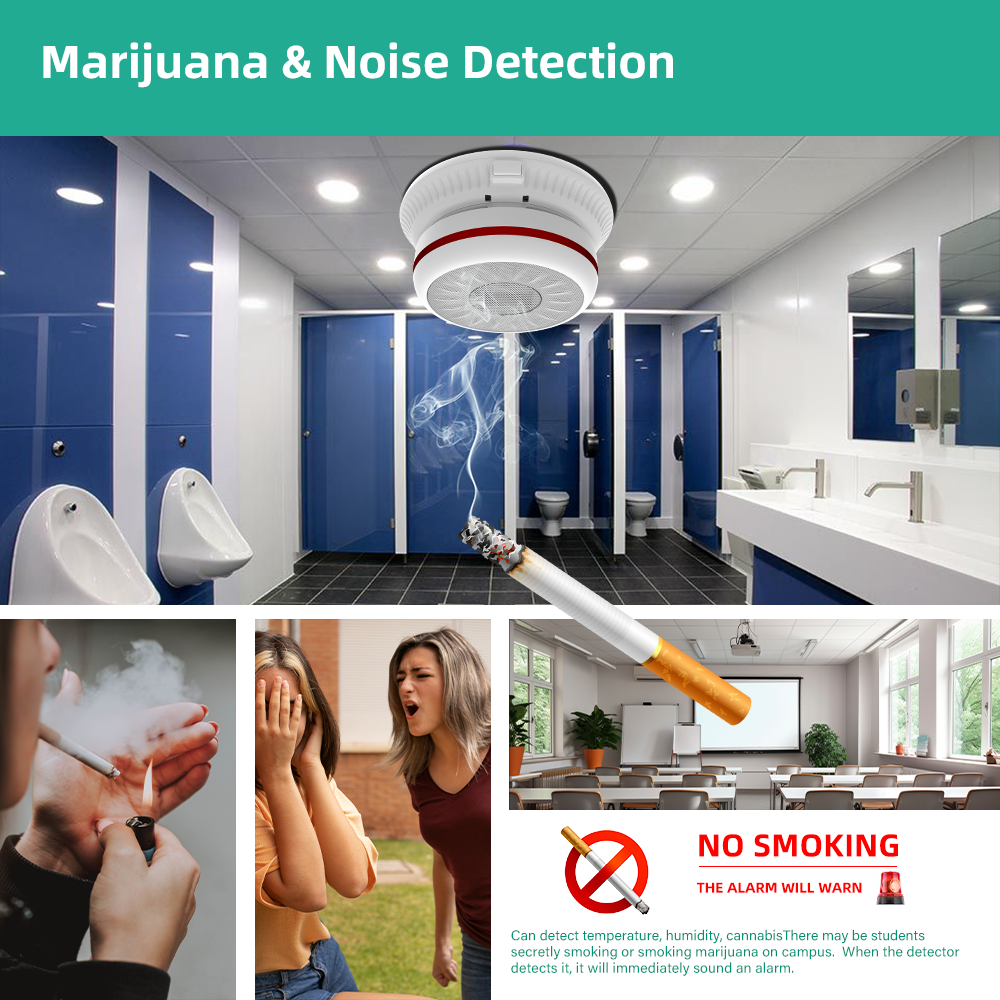Every three minutes, in American schools, a nefarious outbreak is discovered The student was caught vaping. Public health professionals label the use of vaping by teens as a major epidemic. According to the CDC more than 40% of high school students and 80percent of middle schoolers have tried e-cigarettes. Nearly all of them (99%) contain nicotine, a chemical that is addictive which rewires the developing brain and is frequently used as a gateway for smoking cigarettes. Educators, parents, and administrators face mounting pressure to take action. Enter the vape detector, one of the most sophisticated tools that is fast becoming a must-have on campuses nationwide. Among the leaders, Triton and 3D Sense are notable as vape detectors that schools can use that do far more than just sounding an alarm.

How Vape Detectors Work: Precision Without intrusion
Triton ULTRA Smart Safety is modern vape detector which doesn’t rely solely on recordings of audio or video. It guarantees 100% protection from privacy while delivering useful intelligence. It uses particulate sensors that examine the air in real-time. It sends out alerts to staff via email or text when vape aerosols, or masking agents, such as strong perfumes are detected. False positives remain exceptionally low, giving administrators confidence that each notification requires immediate attention.
One unit covers the entire space bathroom, locker or hallway. This makes the deployment affordable. In the first five weeks after installation, Triton customers typically report significant reductions in the number of vaping incidents. The reason? Data-driven deterrence. Triton Cloud Dashboard offers an “hotspot” of where and when vaping takes place most often. Principals can then send security guards or hall monitors to the areas they’re needed the most.
Beyond Detection – Occupancy Visualization and Loitering Control
Triton’s patent pending technology of occupancy visualization differentiates it from other vape sensors. The ULTRA Sensor measures the duration of a dwell without recording any pictures or recordings. Administrators can view the heat maps using colors that indicate how bathrooms can become social centers, popular spots for smoking cigarettes, as well as long-term close contact that can spread respiratory diseases.
Stanford Medicine research underscores the stakes: students who vape are five times more likely to contract COVID-19. In reducing the amount of congregation the vape community, these devices indirectly improve air quality and reduce the risk of transmission for all airborne pathogens. Following the pandemic, this advantage has raised the value of these devices from being merely optional to essential.
Transforming Data into Discipline and Dialogue
Numbers tell a compelling narrative. The Triton reports module collects quantifiable evidence such as incident timestamps and areas, frequency trends that schools can present to schools, parents groups, and even students themselves. The doubts begin to diminish when a campus reports a 60 percentage reduction in detections since detectors were installed. Students and parents see the commitment of their parents. accept the consequences.
Educators amplify impact by announcing the presence of vape detector from day one. The 3D Sense model, for instance, explicitly markets itself as an effective deterrent. Guidance materials suggest that students should be aware of the fact that the air is always watching. Peer accountability is the next step: the social cost of triggering an alert often outweighs any presentation.
A Multi-Front Strategy Schools Can’t Ignore
Vape detectors won’t stop people from smoking on their own, but they’re a component of a larger solution.
Alerts in real-time detect events in the middle of.
Education – Research-based reports are the main source of anti-vaping education.
Signage that is visible and has specific consequences may alter behavior.
Discipline – Hotspot data justifies targeted enforcement.
Support – Schools provide resources for struggling students to stop smoking.
The CDC emphasizes that reversing this trend will require “buy-in” from educators, parents and society. Vape detectors are the missing link – real-time, instant feedback that can transform good intentions into concrete outcomes.
Deployment Made Simple
Registration of devices can take minutes in the Triton Cloud Dashboard. Administrators can add contacts, set alert thresholds and then customize notification rules. A single demo reveals how easy it is. You can schedule a demo to view live hotspot maps and historical graphs in real time.
Conclusion
Every puff not taken care of could result in addiction for the rest of our lives. Every bathroom incident that is not detected poses an hazard to your health and safety. Vape detectors like Triton or 3D Sense for schools offer more than just surveillance. They offer the ability to detect, prevent and prove of progress. The campuses that install them don’t just react to the vaping crises; they are able to control the situation.
These tools can turn nebulous worries into real victories. They have a sensor inside every space, occupancy reports that are privacy-safe, and rapid alert systems. Waiting is not an option in an age where 40% of high schoolers have already tried it out and the number of middle schoolers are growing daily. You’re the first person to find out what the air in your school is telling you.
